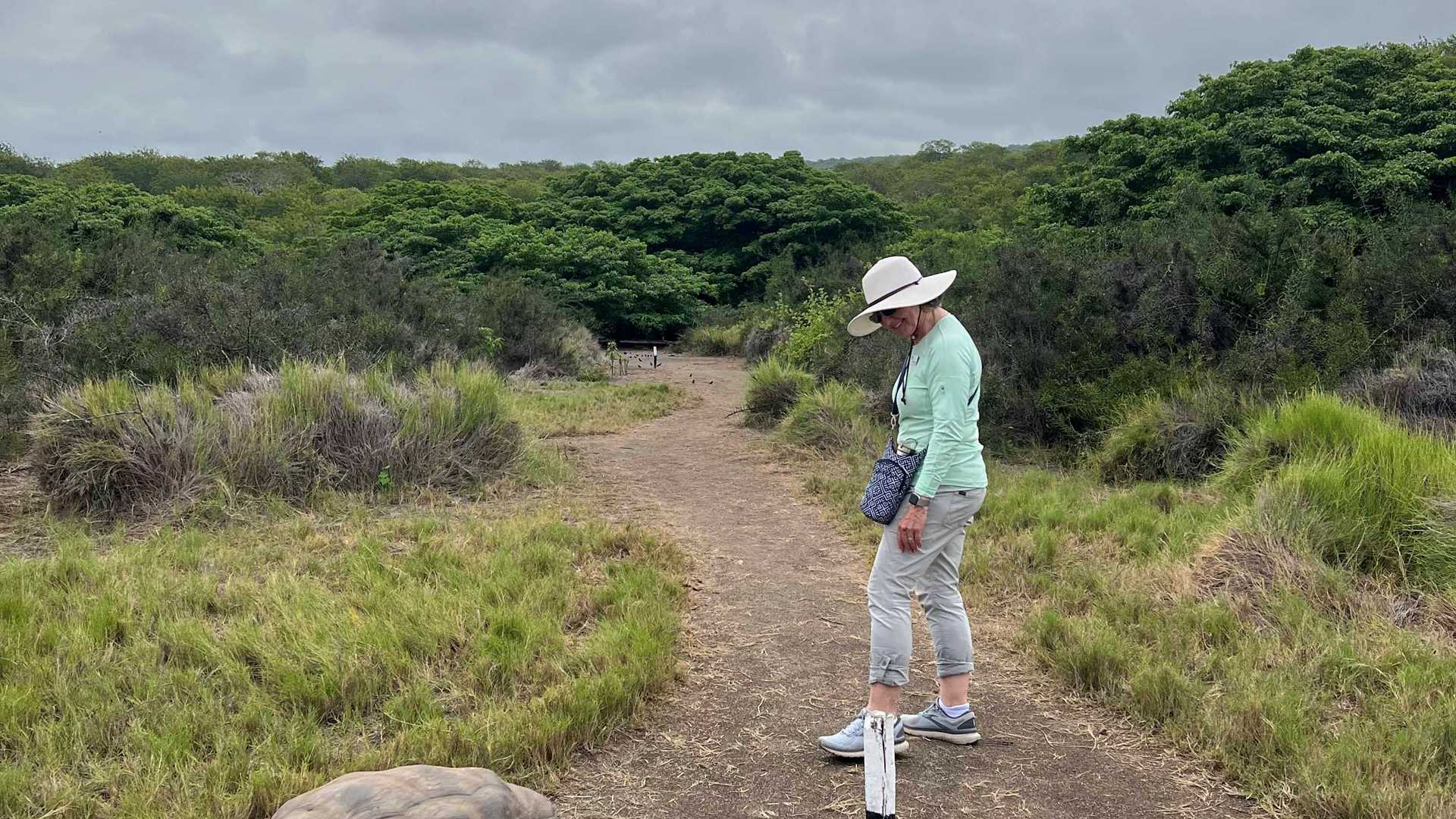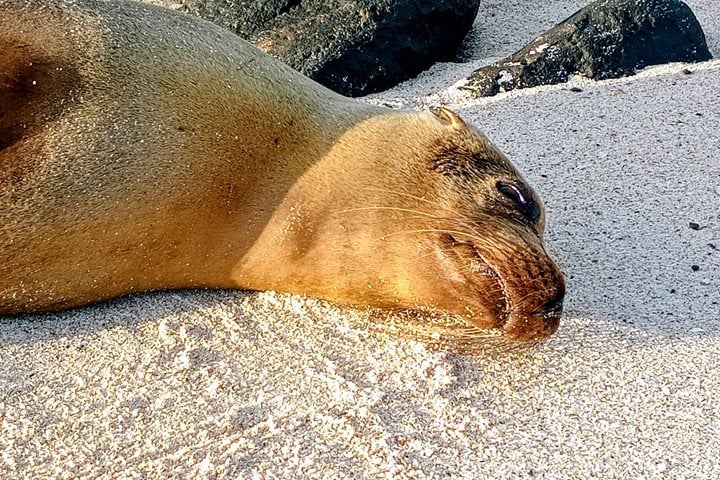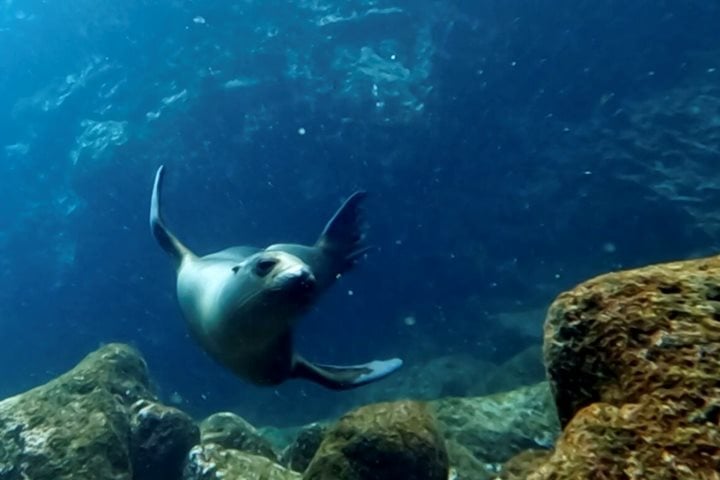We started today by exploring Urbina Bay. It looked like it was raining before we arrived, turning everything green. We observed land iguanas all over the place. We got lucky and saw Galapagos giant tortoises on the trail. They looked curious about us and came very close. After the hike, we went to the beach for a refreshing time in the water. Multiple Galapagos penguins, sea lions, blue-footed boobies, and pelicans surrounded us.
Then National Geographic Islander moved to Tagus Cove. We snorkeled with Galapagos penguins, and we kayaked in the company of sea turtles and flightless cormorants. To finish the day, we had the option to explore the caldera by Zodiac, and we enjoyed a second round of kayaking or hiking. What an amazing day exploring these islands.







